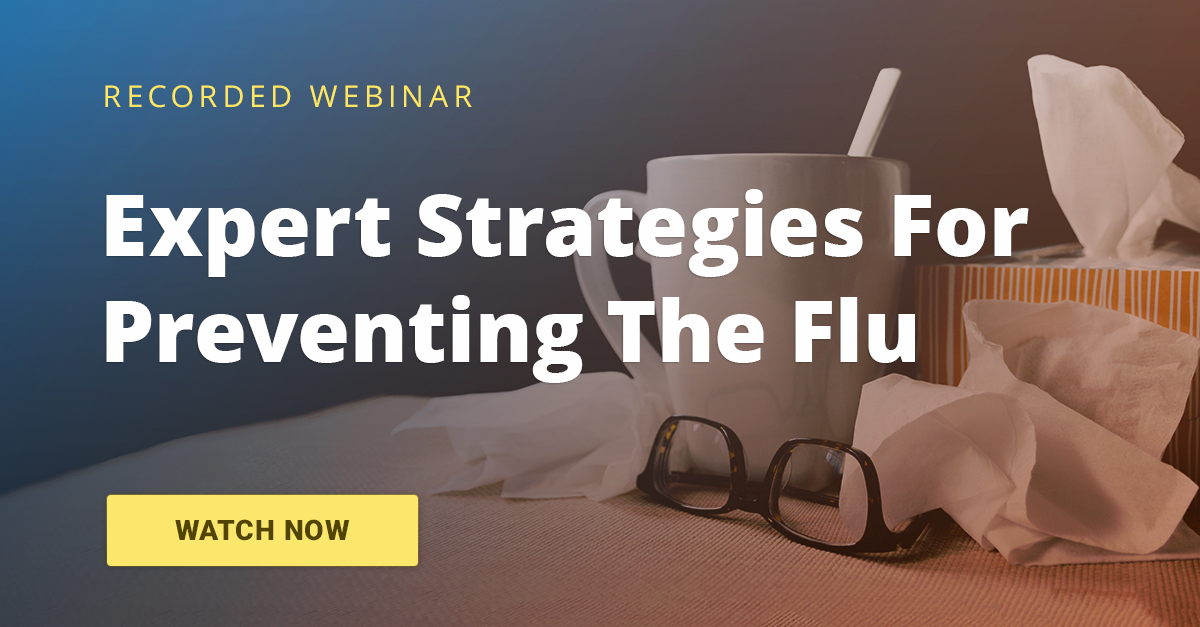3 Steps Every Business Should Take To Prevent A Flu Pandemic
With experts predicting that the next major pandemic may originate from a flu variant, businesses need to take preventative actions and maintain efforts to prevent the spread of the flu in the workplace.
For example, some trivalent (three-component) vaccines are recommended to contain strains that are on the CDC's watchlist:
- A/Michigan/45/2015 (H1N1)pdm09-like virus
- A/Singapore/INFIMH-16-0019/2016 A(H3N2)-like virus (updated)
- B/Colorado/06/2017-like (Victoria lineage) virus (updated)
Public health expert Meg Nash, MPH, recently commented during an AlertFind webinar that the flu will be somewhat milder than we’ve seen in past years.
“But we always have the opportunity for there to be variants that can emerge throughout the season,” Nash said. “So we may see a milder flu, but be administering a less effective vaccine, so we may have significant absences both in school and work just from people dealing with it.”
There are three pandemic prevention tips companies should follow:
Work with an infectious disease clinic. Experts at these clinics can help your employees understand the specific current threats and concerns (like yellow fever or malaria) they’ll face in the regions they’re traveling to.
“Companies can collaborate with an infectious disease clinic to understand what the diseases are within that area and then ensuring that people are immunized appropriately,” Nash said. “Yellow fever, malaria, there are lots of immunizations and stuff that people have to get. And often, to get a visa into that country, you have to show that you’ve had those vaccinations.”
Develop a protocol for when people return home. Decide how employees should monitor their health after the trip. Should they stay home for a few days? Do they need to check their temperature for a certain amount of time and report if it is elevated? An infectious disease doctor can assist your organization in creating these protocols for employees who travel internationally.
Consider holding meetings remotely. Sometimes the risk of traveling to certain parts of the world is too dangerous. For those situations, think about alternate plans, such as holding meetings using conferencing tools instead of in-person.
We have previously discussed the importance of knowing the specific risks your business faces so you can implement the best preparedness strategies. Between office modifications and new approaches to sick and time-off policy guidelines, you have ample resources and ideas to incorporate into your company's business continuity plan as it pertains to influenza.
“Whether you’re talking about the flu or a pandemic, the effect is the same,” Nash said. “You’re going to have people missing work, you may have people potentially die and have loss of productivity. You need to figure out how to keep your business going and minimize any negative effects as much as possible.”
For more insight from Meg Nash, MPH, about how organizations can enact flu prevention campaigns and keep employees healthy, watch AlertFind’s recent webinar, “Don't Let The Flu Disrupt Your Organization.”

You are well on your way toward protecting your staff and organization.
Take the next step toward protecting your organization by learning more about emergency notification systems and the vital role they play in your emergency preparedness plan.